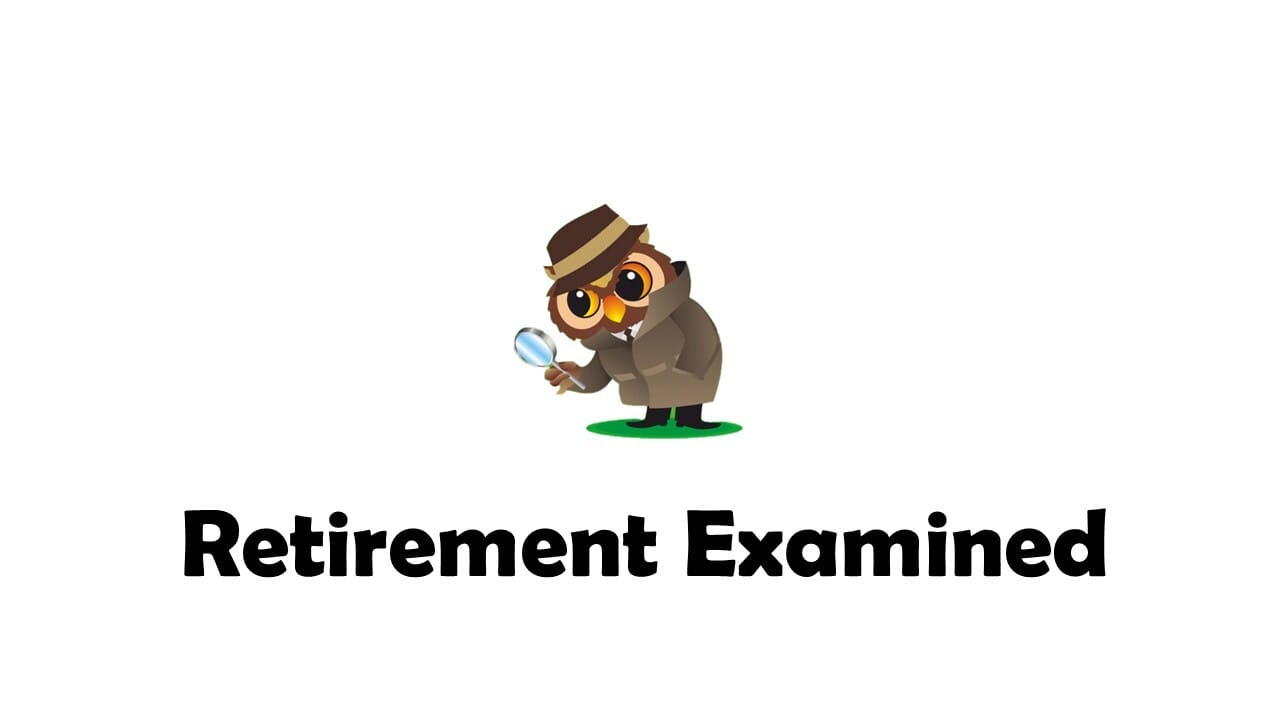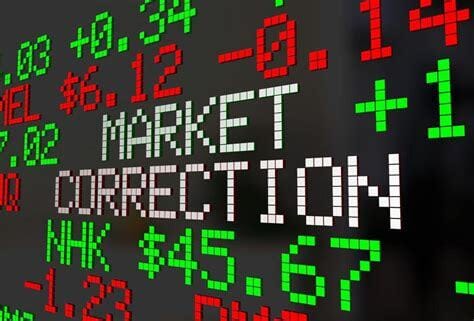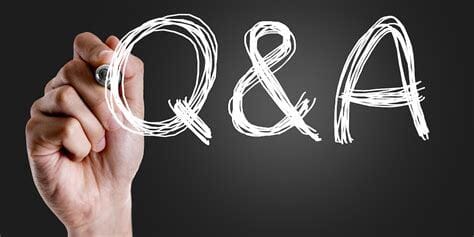- Retirement Examined
- Posts
- Retirement Examined
Retirement Examined
5-Minutes of Breakthrough Secrets: Happy, Fulfilling Retirement

The weekly email that keeps you up to date on exciting Retirement topics in an enjoyable, entertaining way for free.
by Eric Seyboldt, MBA

Financial markets are inherently cyclical, experiencing periods of ascent followed by inevitable declines. These downturns, often termed "market corrections," can evoke anxiety among investors. However, understanding the nature of these corrections and recognizing the market's historical resilience might provide reassurance and guide prudent investment decisions.
Understanding Market Corrections
A market correction is typically defined as a decline of 10% or more in a stock market index from its recent peak. Such corrections are more common than many realize. Since 1980, the S&P 500 has experienced a drop of 10% or more in nearly half of the calendar years. While these downturns can be unsettling, they serve as natural mechanisms for adjusting overvalued asset prices and can present opportunities for investors to purchase quality assets at reduced prices.
Historical Instances of Market Resilience
Examining past market corrections and their subsequent recoveries illustrates the market's enduring strength:
October 1997 Mini-Crash: On October 27, 1997, the Dow Jones Industrial Average (DJIA) fell by 7.18% due to the Asian financial crisis. Remarkably, the market rebounded swiftly, with the DJIA gaining 337.17 points (4.71%) the very next day, recovering a significant portion of the previous day's losses.
2010 Flash Crash: On May 6, 2010, major U.S. stock indices experienced a rapid decline of over 9% within minutes, only to recover most of those losses by the end of the trading day. This event underscored the market's ability to rebound quickly even after sudden and severe drops.
August 2015 Correction: The S&P 500 declined by 11% between August 17 and August 25, 2015, due to concerns over China's economy. The market recovered those losses by October 5, 2015, marking a rebound period of approximately six weeks.
Early 2018 Correction: In early 2018, the S&P 500 experienced a correction of about 10% over a span of nine days, primarily due to inflation fears. The market recouped these losses within approximately eight weeks.
Late 2018 Correction: Between September 20 and December 24, 2018, the S&P 500 fell nearly 20%, flirting with bear market territory. However, by April 2019, the index had regained its previous highs, resulting in a recovery period of about four months.
The Pitfalls of Panic Selling
Reacting impulsively to market downturns by selling investments can be detrimental. Panic selling locks in losses and risks of missing the subsequent recovery. Historical data underscores this point: since 1974, the S&P 500 has risen an average of more than 8% one month after a market correction bottom and more than 24% one year later. This highlights the importance of maintaining a long-term perspective and resisting the urge to make hasty decisions based on short-term market movements.
Strategies for Navigating Market Volatility
To effectively manage market fluctuations, consider the following approaches:
Maintain a Long-Term Perspective: Focus on your long-term financial goals rather than short-term market movements. Recognize that volatility is a natural part of investing and that markets have historically trended upward over extended periods.
Diversify Your Portfolio: A well-diversified portfolio can mitigate risks associated with market volatility. By spreading investments across various asset classes, sectors, and geographies, you can reduce the impact of any single underperforming investment.
Regular Portfolio Rebalancing: Periodically adjusting your portfolio to maintain your desired asset allocation can help manage risk and ensure alignment with your investment objectives.
Consult Financial Advisors: Professional guidance can provide personalized strategies tailored to your financial situation, helping you navigate complex market conditions with confidence.
Conclusion
Market corrections, while unsettling, are a natural aspect of investing. History demonstrates that markets possess an inherent ability to recover and grow over time. By understanding this cyclical nature and adhering to disciplined investment strategies, investors can navigate periods of volatility with confidence and poise. Patience and a long-term outlook are essential in weathering market storms and achieving financial success. Remember, it's not about timing the market, but time in the market that counts.
Reach out to us for a complimentary, 10-minute consultation call. Let's explore strategies to protect your wealth and make your retirement everything you've dreamed of—secure, fulfilling, and worry-free. Schedule a free 10-minute consultation today by calling 614-943-2265. Your future deserves the best plan, and we're here to help make it happen.
Big Tech Has Spent Billions Acquiring AI Smart Home Startups
The pattern is clear: when innovative companies successfully integrate AI into everyday products, tech giants pay billions to acquire them.
Google paid $3.2B for Nest.
Amazon spent $1.2B on Ring.
Generac spent $770M on EcoBee.
Now, a new AI-powered smart home company is following their exact path to acquisition—but is still available to everyday investors at just $1.90 per share.
With proprietary technology that connects window coverings to all major AI ecosystems, this startup has achieved what big tech wants most: seamless AI integration into daily home life.
Over 10 patents, 200% year-over-year growth, and a forecast to 5x revenue this year — this company is moving fast to seize the smart home opportunity.
The acquisition pattern is predictable. The opportunity to get in before it happens is not.
Past performance is not indicative of future results. Email may contain forward-looking statements. See US Offering for details. Informational purposes only.

Active vs. Passive Investing: An Insider Q&A with Advisor Eric Seyboldt
by Eric Seyboldt, MBA
Client: "Eric, I keep hearing debates about passive investing versus active investing. Some say I should just buy index funds and chill, others say I need a genius manager to beat the market. It’s confusing. Can you explain, in plain English, what the difference is between passive and active investing?"
Eric: “Great question. Think of it this way: passive investing is like putting your portfolio on autopilot, while active investing is like manual driving in a race. Passive investors buy the whole market (usually via an index fund or ETF) and aim to match the market’s returns, no more, no less. Active investors, on the other hand, are trying to beat the market— they’re stock pickers or fund managers who constantly decide what to buy or sell in hopes of outperforming a benchmark. In short, passive = buy and hold the market, active = search for winners and dump losers. In recent years, the passive approach has become incredibly popular (trillions of dollars have flowed into index funds). But active management still has its allure, especially for those chasing that extra edge.”
Client: “So their objectives differ? Passive is fine with average market returns, and active is shooting for higher returns?”
Eric: “Exactly. The goal of passive investing is to mirror the market’s performance. If the S&P 500 (an index of 500 big stocks) goes up 10%, a passive S&P 500 fund will also go up roughly 10%. Passive investors are okay being the ‘average’ – because the average market return has historically been quite good over time. Active investors, meanwhile, are aiming for “alpha” – that’s insider-speak for beating the market’s return. They aren’t satisfied with 10% if they think their skill (or their fund manager’s skill) can get 12% or 15%. Of course, with the chance to beat the market comes the risk of lagging it too. If the active bets don’t pan out, you could do worse than the index. So yes, passive accepts the market’s ride; active tries to outrun the pack.”
Client: “Got it. What about the management style? What are these managers actually doing day to day in active vs. passive strategies?”
Eric: “This is where the contrast is really stark. A passive fund manager isn’t doing a whole lot of wheeling and dealing – they’re essentially tracking an index. For example, if you own a Vanguard Total Stock Market Index fund, the manager’s job is mostly to mimic the index composition: no big active calls, just replicate the index and occasionally rebalance when the index changes. It’s a rules-based, set-it-and-forget-it approach. Imagine a train on fixed tracks – it goes wherever the tracks (the index) lead.
In active management, the manager is in the driver’s seat, making constant decisions. They research companies, analyze financials, follow the news, and maybe have a team of analysts crunching data. They decide “we should buy more of Stock A, sell off Stock B, avoid Sector C this quarter” based on their forecasts. Active managers can pivot anytime – if they think tech stocks will crash, they can sell them all; if they find a “hidden gem” stock, they load up on it. It’s hands-on and flexible. Think of an active manager as a chef crafting a new recipe every day, adjusting spices to taste – whereas a passive manager is serving you the same reliable buffet that mirrors the market’s flavor. This hands-on style means an active fund’s performance can vary a lot depending on the manager’s skill and choices, whereas a passive fund will always closely follow its index by design.”*
Client: “And what about risk? Is one approach riskier than the other?”
Eric: “Both have risks, just different kinds. Passive investing gives you the market’s risk and reward. You’ll get whatever the market does – if the entire market crashes 30%, a passive index fund will crash about 30% too. You can’t sidestep a bear market in an index fund; you’re on the ride for better or worse. The flip side is you’re highly diversified (in one fund you might own hundreds or thousands of stocks), so you’re not exposed to any single company blowing up. Passive investors take on market risk but eliminate the risk of choosing the wrong stock or wrong fund manager.
Active investing introduces manager risk and strategy risk on top of market risk. A good active manager might maneuver around trouble – for instance, they can raise cash if they expect a downturn, or use hedging techniques (like short selling or options) to cushion a fall. In theory, an active fund could drop less than the market in a crash if the manager correctly dodges bullets. That’s a plus. But there’s also the chance the manager makes a bad call – say, betting big on a sector that tanks – then you could lose more than the market. Active funds might also be less diversified (maybe 30-50 stocks instead of 500), which means concentration risk: a couple of big misses can hurt badly. It’s like the difference between a tortoise and a hare – the passive “tortoise” steadily matches the market (you won’t win the race by a mile, but you won’t blow up either), while the active “hare” is sprinting and zig-zagging to get ahead, with the very real risk of stumbling.”
Client: “That makes sense. Now, let’s talk about costs – I’ve heard index funds are cheaper. How big is the difference in fees between passive and active investing?”
Eric: “You heard right – the fee gap is huge. Passive funds (like index mutual funds or ETFs) generally have ultra-low fees. There’s no pricey stock-picking operation to fund, so they charge just enough to cover basic admin. We’re talking expense ratios that can be as low as 0.03% per year on some index ETFs – basically pennies on the dollar. Active funds charge more because you’re paying for the manager’s expertise (or attempt at expertise), research teams, trading costs, etc. The average actively managed stock mutual fund charges around 0.5% to 1% annually (in fact, one study pegged the average equity fund at about 0.68% vs only 0.06% for the average passive equity fund). That might not sound like a lot, but over decades those fees compound and can eat a serious chunk of your returns. It’s like a race where the active fund starts with a handicap – they have to overcome higher fees just to catch up to the index.
If you get into hedge funds or specialty active funds, the costs can skyrocket. Hedge funds famously often charge “2 and 20” – 2% annual management fee plus 20% of any profits!
Imagine you make 10% gains; 2% goes off the top, and of the remaining 8%, they take 20% (which is 1.6%). You’d net only ~6.4% while paying 3.6% in fees. Ouch. Even Warren Buffett pointed out that many active managers get rich regardless of performance because of those high fees. Bottom line: passive investing is dirt-cheap, active investing ranges from somewhat expensive to very expensive. Those costs make a big difference – they’re one reason many active funds lag behind in the long run, since fee drag is tough to overcome.”*
Client: “What about taxes and transparency? Are there differences in how tax-efficient each strategy is, and will I know what I own?”
Eric: “Absolutely. Passive strategies generally shine in tax efficiency and transparency. Because a passive index fund isn’t trading in and out of stocks every other week, it rarely triggers taxable capital gains until you, the investor, decide to sell. A broad-market index fund might only make tiny adjustments occasionally (when the index composition changes), so it often doesn’t throw off big annual tax bills. In contrast, an active fund doing frequent trading can rack up taxable gains that get passed on to shareholders each year. You could end up owing taxes even if you didn’t sell a single fund share, simply because the manager was busy trading. Passive = usually very tax-friendly; active = can be tax-inefficient (unless held in a tax-sheltered account like a 401k or IRA).
On transparency: With a passive index fund, you always know what you own. The fund’s holdings mirror a published index, so you can see all the stocks or bonds in it at any time. It’s straightforward – if you buy an S&P 500 index fund, you effectively own every company in the S&P 500. Active funds are often less transparent. Many mutual funds disclose their holdings only periodically (like quarterly), and they can change a lot in between reports. Some active managers treat their strategy as proprietary “secret sauce” – they don’t necessarily want to tip their hand. There are even instances where you don’t find out what an active fund was holding until after the fact. (An exception is actively managed ETFs like ARK Invest’s funds, which actually publish their trades daily – pretty unusual transparency for active management.) But in general, with passive you have full visibility, and with active you’re putting more trust in the manager’s decisions behind the scenes.”*
Client: “Interesting. Now, how about investor behavior? Do people tend to act differently (or make different mistakes) with passive vs. active investing?”
Eric: “Great point. Your own behavior can be just as important as the strategy. With passive investing, the approach inherently encourages a long-term mindset – you’re not constantly looking for the next hot trade, so you might be less tempted to tinker and mess things up. It can actually counteract some common behavioral pitfalls by promoting patience. Many passive investors just set up automatic contributions and ignore the noise, which often leads to better outcomes than frantic trading. As a result, passive investors might avoid the overconfidence or panic-selling that hits others.
Active investing, by contrast, can play into human biases. When you or your fund manager is making lots of decisions, there’s a tendency to get emotional – maybe you fall in love with a stock, or you panic and sell at the worst time. Investors in active funds also have a bad habit of chasing performance: they pour money into last year’s winning fund (often after it’s already had its run) and then bail out when it subsequently underperforms. I’ve seen this cycle: for example, during the tech boom, lots of folks piled into flashy tech-focused active funds like ARK Innovation when it was skyrocketing, only to flee when it crashed back to earth. Studies actually show that active investors exhibit more behavioral biases – things like overconfidence and herding – compared to passive investors. In plain terms, the active approach gives you more rope to hang yourself with, behaviorally speaking. If you’re disciplined and savvy, active investing can be rewarding, but if you’re prone to emotional decisions, passive investing imposes a helpful kind of discipline: do nothing and stay the course. Sometimes, that’s the best thing to do.”
Client: “We’ve talked about theory, but what about performance? Historically, which strategy has actually made more money for investors?”
Eric: “Ah, the million-dollar question (literally, in one famous case!). I’ll shoot you straight – most active investors do not beat passive indexing over the long run, especially after costs. It sounds surprising, but it’s true. Year after year, research finds that the majority of active funds underperform their benchmarks. For instance, one extensive S&P study found that over a 20-year period, only about 4% of actively managed stock funds consistently beat their benchmark index. That means 96% lagged or failed to keep up! Study after study shows similar results: over 5, 10, and 15-year spans, usually somewhere between 70-90% of active funds underperform index funds in the same category.
The strategy at my firm is to combine active investing with passive investing. You could call this hybrid investing, where we use passive investments that are low-cost, and add in a risk-management strategy that changes the combinations of the passive investments based on economic indicators.
Even legendary Warren Buffett is a huge advocate of passive indexing because of this. He famously made a $1 million bet that an S&P 500 index fund would outperform a basket of hand-picked hedge funds over 10 years. The result? The index fund won hands down – about 7% per year versus around 2% per year for the hedge funds. The pros charging high fees got smoked by the plain index fund. Buffett basically used that bet to show the world that high-cost active management often isn’t worth it.
Now, this doesn’t mean no one ever beats the market. Some do, especially over shorter periods. There are standout years and standout managers. For example, a star stock picker can have a big win – look at Cathie Wood’s ARK Invest fund: it soared over 150% in 2020 by betting on disruptive tech stocks. That was an incredible active win in that year. But consistency is the hard part. After its huge win, ARK had a brutal decline, losing over 70% from its peak by 2022. In fact, from ARK’s inception in late 2014 to mid-2022, it actually delivered lower total returns (around 182% cumulative) than a low-cost passive Nasdaq 100 index fund did (around 245% over the same period).
So the passive fund quietly beat the high-flying active fund over the long haul, despite the active fund’s flashy short-term outperformance. It’s a real-life tortoise-and-hare tale.
The takeaway: Index funds have historically outperformed the vast majority of active funds, especially once you account for fees and mistakes. There are, of course, exceptional active managers (Peter Lynch in the ’80s, or some elite hedge funds), but they are rare, and it’s hard to identify them in advance. For most investors, betting on passive funds has simply been a more reliable way to grow wealth.”
Client: “That’s pretty compelling. Can you give me some real-world examples of each strategy? Like, who are the flag-bearers for passive and active investing?”
Eric: “Sure. On the passive investing side, the biggest name is Vanguard. Vanguard’s founder, the late Jack Bogle, practically invented the index fund for regular investors – he launched the first index mutual fund (tracking the S&P 500) back in 1976.
Today, Vanguard is synonymous with low-cost passive investing; their funds, like the Vanguard S&P 500 Index (e.g. VFIAX) or Total Stock Market Index, are staples in many portfolios. Other huge players are BlackRock’s iShares and State Street’s SPDR ETFs – for example, the SPDR S&P 500 ETF (ticker SPY) simply holds all the S&P 500 stocks and is one of the most traded securities in the world. Basically, if it’s an index fund or an ETF with a broad market name, it’s likely a passive vehicle.
For active investing, you can look at firms like ARK Invest. ARK’s flagship fund, ARKK, is actively managed by Cathie Wood – she and her team pick a concentrated portfolio of innovation-focused stocks (Tesla, biotech firms, etc.) and adjust it frequently. It’s the poster child of high-conviction active management in recent years (for better or worse, as we discussed). Hedge funds are another example of active management – think of managers like Ray Dalio (Bridgewater Associates) or Ken Griffin (Citadel) making bold macro and stock bets, or mutual funds like Fidelity Contrafund, where the manager selects stocks trying to outperform the market. Even Warren Buffett’s Berkshire Hathaway is effectively an actively managed stock portfolio (Buffett just doesn’t charge you typical hedge fund fees for it). So anytime you hear about a “star fund manager” or a fund that touts its clever stock-picking strategy, that’s active management. Meanwhile, anytime you hear “index fund” or see an ETF that tracks something like the S&P 500, that’s passive.”
Client: “This has been super helpful. Last question: Which approach is right for me? What’s your ultimate advice on active vs. passive investing for an individual investor?”
Eric: “Ultimately, it comes down to your personal goals, interests, and discipline. For most people, especially those who don’t want to obsess over their investments, passive investing is a brilliant default choice. It’s low-cost, low-maintenance, and historically hard to beat. You’re basically saying, ‘I’ll ride the market’s growth and not try to be smarter than everyone else.’ Over the decades, that can be extremely rewarding. As Jack Bogle – the father of passive investing – famously said: “Don’t look for the needle in the haystack. Just buy the haystack.” In other words, own the whole market instead of hunting for the next superstar stock. I’ve seen that approach work out for a lot of folks – fewer surprises, more steady growth.
Now, if you have a passion for investing, there’s nothing wrong with carving out a portion of your portfolio for active strategies. Some people enjoy the hunt – researching stocks, trying to time the market, etc. I call this your Vegas Money. Just do it with eyes wide open. Maybe you put 10-20% of your money in “play money” active ideas and keep the rest passive as your core. That way, you get the best of both worlds: a stable foundation and a chance at outperformance on the edges.
Remember, consistency and patience trump almost everything else. The worst scenario is jumping in and out, changing strategies in panic. Whether you choose passive, active, or a mix, stick to a disciplined plan. As an advisor who’s seen many market cycles, I’ll say this: the strategy you can stick with through thick and thin is the one likely to serve you best. Passive investing makes that discipline easier for a lot of people. Active investing can make sense if you truly have an edge or just love the game, but it requires humility and control.
In the end, there’s no one-size-fits-all answer, but you now understand the trade-offs. Think of passive vs. active like two tools in your toolbox. Use the one that fits your needs – or use both. Just keep your costs low, your diversification broad, and your expectations realistic. Do that, and you’ll be ahead of most investors, regardless of style.”
Contact us for a free, brief 10-minute consultation. Let's explore strategies to protect your wealth and make your retirement everything you've dreamed of—secure, fulfilling, and worry-free. Schedule a free 10-minute consultation today by calling 614-943-2265. Your future deserves the best plan, and we're here to help make it happen.

Fixed annuities can be an essential component of a well-rounded retirement strategy, offering security, predictability, and efficiency in financial planning.
These are current fixed annuity rates and their durations from Top A-rated carriers (subject to change at any time, not FDIC insured):
Rates Just Popped Up! Don’t Wait To Lock These Fixed Annuity Rates In Today!
3-year: 5.25% (under $100k Deposited)
3-year: 5.35% (over $100k Deposited)
5-year: 5.45% (under $100k Deposited)
5-year: 5.60% (over $100k Deposited)
7-year: 5.65% (under $100k Deposited)
7-year: 5.95% (over $100k Deposited)
Please feel free to call Eric at 614-943-2265 if you’d like to ask any questions or request information on these fixed annuities or other retirement topics that are on your mind.


REAL ASSETS, Invest Like the Ultra-Wealthy

Invest Like the Ultra-Wealthy: Why Smart Money Is Flocking to Real Assets Like Gold—and Even Bourbon
Let’s be blunt: the old playbook for protecting retirement is broken. Inflation is creeping higher. The dollar is losing its punch. Central banks are printing money like it’s Monopoly night. And markets? As unstable as ever.
That’s why the savviest investors aren’t just watching the storm—they’re preparing for it.
They’re moving into real assets—tangible, inflation-resistant investments that don’t vanish when the market sneezes. We’re talking about gold. We’re talking about bourbon barrels. Yes, bourbon. The same elite-class asset quietly making millionaires in private circles.
These aren’t just collector’s items. They’re financial armor—hard assets that hold their ground when stocks crater and paper wealth evaporates.
And it’s not just a hedge—it’s a strategy.
📌 Gold has withstood centuries of financial upheaval.
📌 Bourbon barrels are aging assets with built-in appreciation and rising global demand.
📌 Physical assets provide something no stock ever can: ownership you can see, touch, and trade on your terms.
During market chaos, real assets don’t flinch. They thrive. History proves it. While equities tumble, hard assets often surge—shielding portfolios and delivering asymmetric returns when they're needed most.
And even in calm times? They add powerful diversification. That’s why the ultra-wealthy use them as a cornerstone—not a sideshow—in their wealth strategy.
Ask yourself:
🧠 Are you truly diversified?
🧠 What happens to your retirement if inflation stays elevated?
🧠 If the dollar weakens, what asset in your portfolio gets stronger?
If you don’t have a good answer, it’s time for a new conversation.
Allocating funds into the asset class known as “Real Assets” may be a strategy that you should consider.
Ask us how to Rollover a portion of Your IRA or 401k To A BOURBON IRA (www.bourbon.fund/how-it-works/) or a GOLD IRA (see link below) and:
Safeguard your assets from the collapsing dollar
Incorporate the ‘REAL ASSET’ class into your portfolio like the ultra-wealthy
Hedge against the current high-inflation conditions
Protect your retirement assets against economic crises
Just get in touch. We make it easier than ever.
CONNECT WITH US

Eric Seyboldt, MBA
Feedback or Questions?
You’re invited to get in touch with us if you’d like to find out how the Novus Financial Group can help you on your journey to a happy, fulfilling life in Retirement.
Office: 614-943-2265
Feel Free To Forward Retirement Examined To A Friend and Have Them Subscribe By Clicking The Button Below:
Reach out if you’d like to advertise your business on Retirement Examined or would like to be a sponsor.
Investment advisory services are offered by duly registered individuals on behalf of CreativeOne Wealth, LLC a Registered Investment Adviser.
The content we provide here isn’t financial advice and cannot be taken as such. Please speak to your financial advisor before making any investment decision. Also, note that every investment comes with its risks and drawbacks. Lastly, we would like to remind you that past results cannot guarantee future returns.
This website contains one affiliate link. When you click on the link and make a purchase, we may receive a commission at no additional cost to you. We only promote companies that we have personally used or researched and believe will add value to our readers


